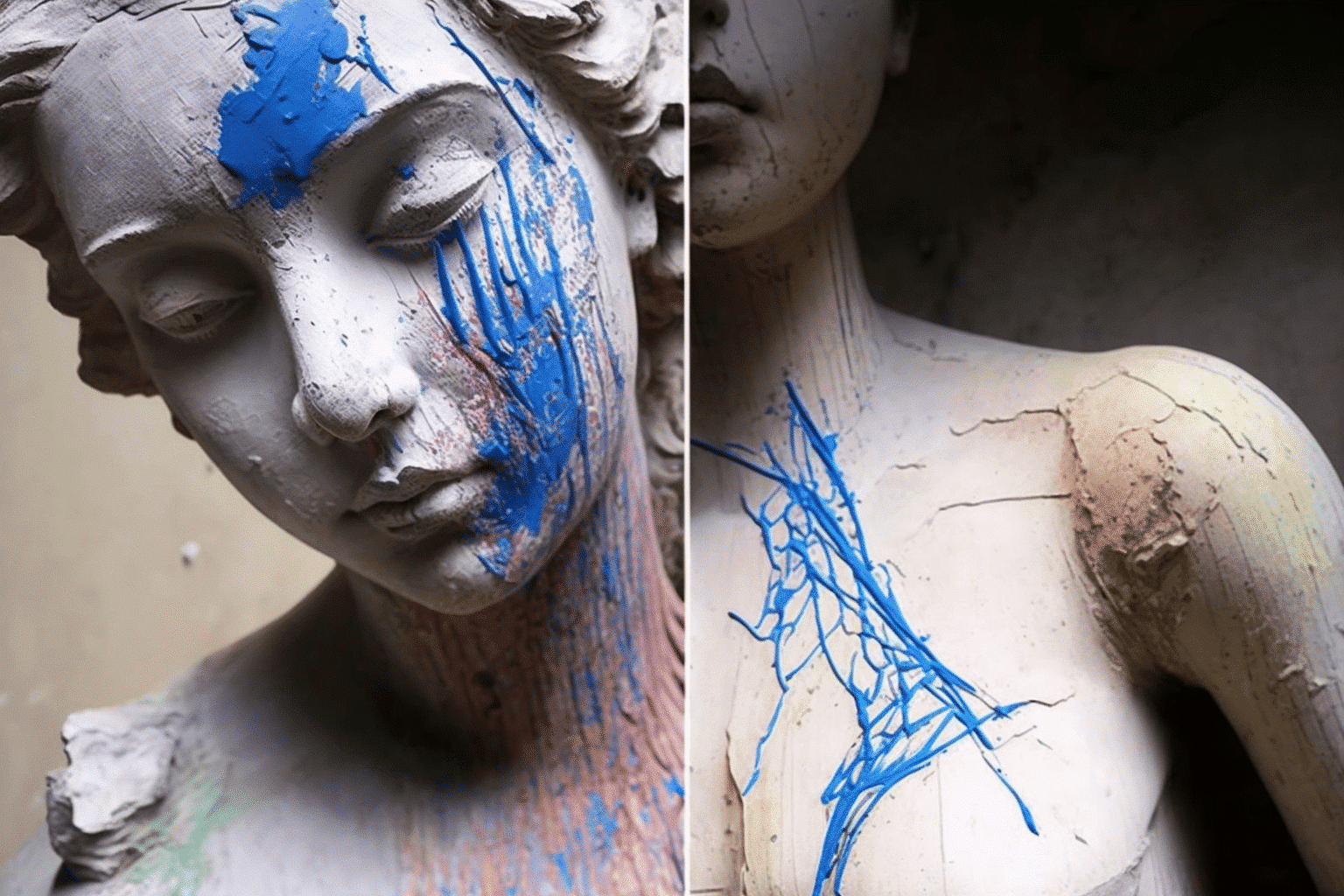A statue over 200 years old depicting the water nymph Sabrina has been marred by blue crayon vandalism, as reported by the National Trust, a British conservation charity. The damaged sculpture, located in Worcestershire, western England, was discovered on Easter Saturday. After consulting with conservators and cleaning the statue, the National Trust successfully removed the crayon on Thursday morning.
Another monument, a memorial dedicated to landscape designer and architect Lancelot “Capability” Brown, found within the grounds of the historic Croome estate, was also defaced with blue crayons. The National Trust is still working on cleaning the memorial. A National Trust spokesperson expressed disappointment over the rare incident, noting the millions of visitors who respect and enjoy the sites under their care.
The statue of Sabrina, crafted by prominent British sculptor John Bacon in the early 1770s, is made from Coade stone and positioned within a grotto adorned with shells, coral, and gems beside a 1.5-mile-long artificial serpentine lake. The exact date of the sculpture’s creation is debated, with the National Trust suggesting either the mid-1780s or 1802.
The Coventry family owned the Croome estate, where both vandalized monuments are situated, from the 16th century until 1948. Over time, the estate has served various purposes, including a secret airbase during World War II and the Hare Krishna UK headquarters in 1979.
While defacing historical monuments is uncommon, it is not without precedent. Plymouth Rock, believed to be where the Pilgrim Fathers first set foot in the United States, was vandalized with graffiti in February 2020. In July 2019, seven people were arrested for spray-painting graffiti on the iconic “Bean” sculpture in Chicago’s Millennium Park.
The National Trust is now taking additional measures to prevent future acts of vandalism on the historic sculptures and monuments under its care. While there is no foolproof way to protect these sites, the organization is considering implementing more security measures, such as increased surveillance and staff presence. The Trust is also exploring the possibility of collaborating with local communities and educational institutions to raise awareness of the importance of preserving and respecting historical landmarks.
While these incidents of vandalism are rare, they serve as a stark reminder of the need for vigilance in protecting cultural heritage. The National Trust encourages visitors to report any suspicious activity or signs of damage to their sites, as prompt action can significantly mitigate the impact of vandalism.
In response to the defacement of the Sabrina statue and Capability Brown memorial, the local community has expressed their support for the National Trust’s efforts to preserve and protect the historic Croome estate. The public’s interest in the incident has also led to an increased appreciation of the estate’s rich history, and many have expressed their desire to visit the site and learn more about the stories behind these important landmarks.
This unfortunate event, while disheartening, has also catalyzed dialogue about the significance of cultural heritage and the responsibility of communities to respect and protect these treasures. As the National Trust continues its work to safeguard the UK’s historical sites, it is clear that the combined efforts of organizations, local communities, and individuals will play a crucial role in ensuring that future generations can appreciate and learn from these invaluable cultural artifacts.




